EDINBURGH CASTLE |
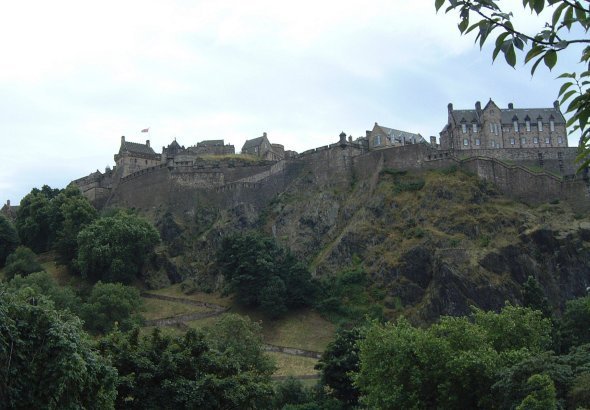 |
The famous Edinburgh Castle, seen from Princes Street, dominates both the Old and New Towns of Edinburgh, which are listed as World Heritage sites. |
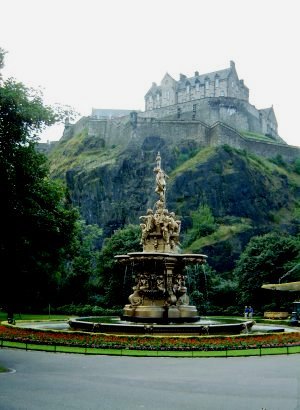 |
From the Ross Fountain in the Princes Gardens, we obtained another view of the Castle. |
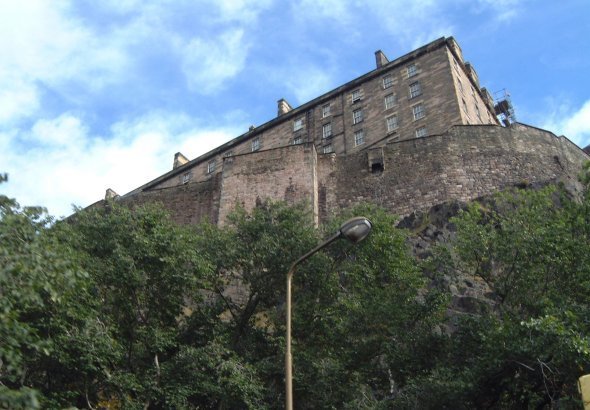 |
During the bus tour of the city, we learned that the Castle was often the site of hasty trials. Bodies were tossed from the opening seen at the rear of the Castle in this picture. |
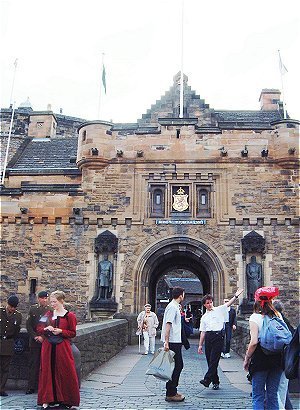 |
Visitors cross the draw bridge to enter the gates. A free CD-based audio tour is available in six languages, but the guided tour is also recommended. |
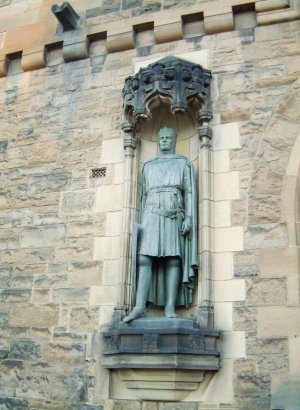 |
On the left side of the gate is a statue of Scotland's warrior king, Robert the Bruce. |
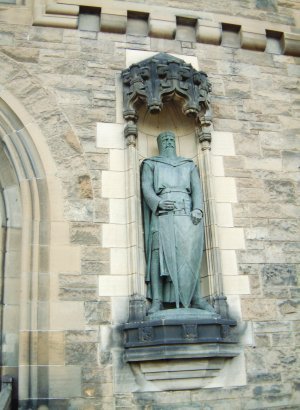 |
A statue of Scottish hero, William Wallace, is on the right side of the entrance. |
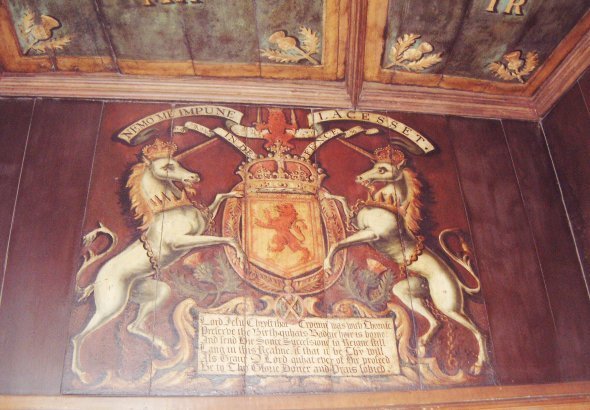 |
This Royal Coat of Arms of Scotland is in the small Chamber where Mary Queen of Scots gave birth to James VI of Scotland (James I of England). |
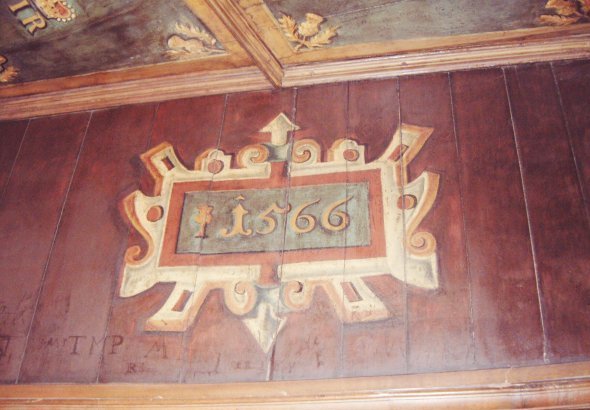 |
The interior of the Royal Palace was remodelled for King James VI's 'homecoming' in 1617. The date 1616 with swags of fruit is prominently displayed in the main part of the Great Chamber, now called Laich Hall. |
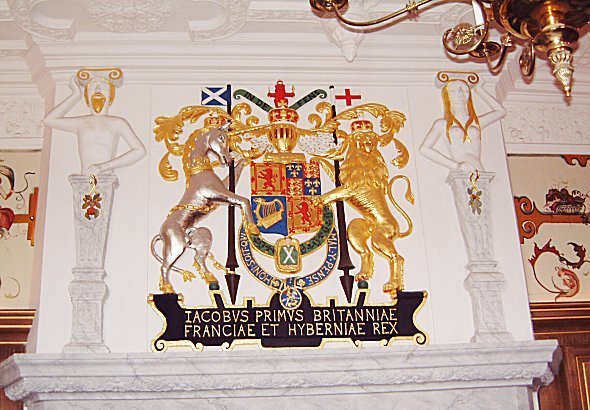 |
Laich Hall and Chamber, ornamented with royal emblems, is the entry point immediately after the Crown Room on the first floor, where the Honours of Scotland are housed. The Stone of Destiny, after being returned to Scotland from Westminster Abbey, London, in 1996, rests beside them. |
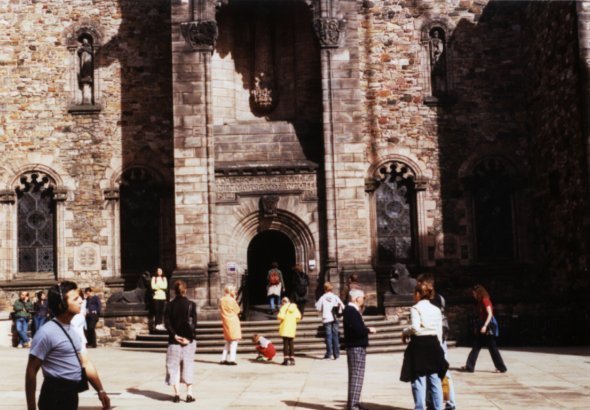 |
In 1927 the Prince of Wales (later King Edward VIII) opened the Scottish National War Memorial in the uppermost Crown Square to honour Scotland's dead during the 1914-1918 World War. The building, once the site of a medieval church and a 16th century ammunition house and an 18th century army barracks, also commemorates those who fell in World War II (1939-1945) and recent battles. The motto of Scotland's regiments, Nemo Me Impune Lacesset, translates as "Nobody attacks me with impunity". |
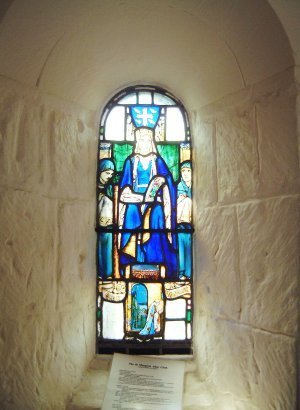 |
This is one of the stained glass windows, a 1922 addition, to St. Margaret's Chapel. Windows are dedicated to St. Andrew, St. Ninian (in chancel), St. Columba, St. Margaret and Sir William Wallace. |
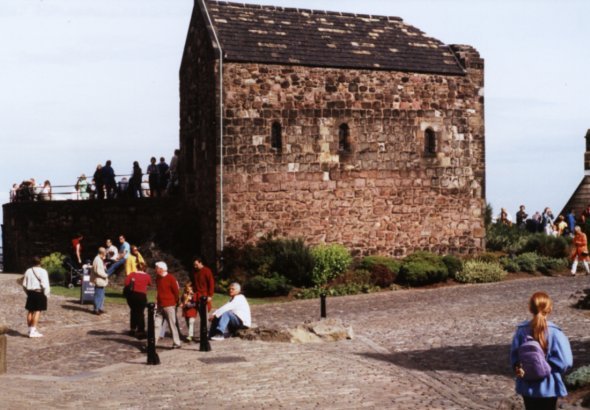 |
This is a view of the back of St. Margaret's Chapel, which is said to be the oldest structure in Edinburgh. It was built by King David I (1124-1153). |
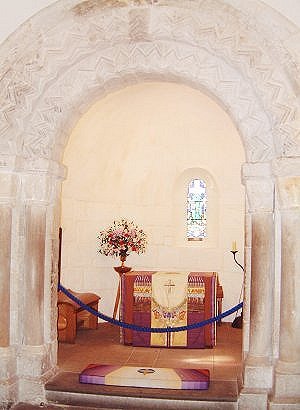 |
The chancel of St. Margaret's Chapel, beyond the arch at the east end, was reserved for the priest. The nave was reserved for the use of the élite congregation. |
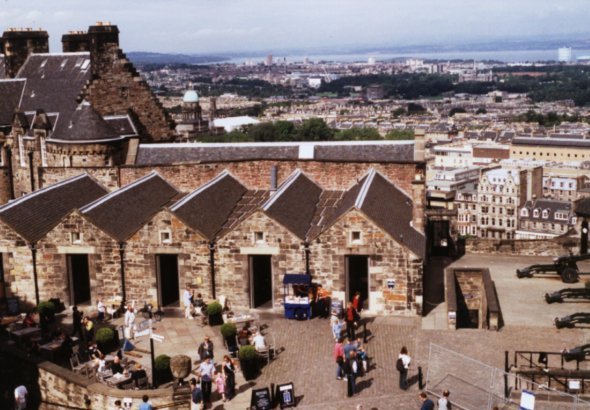 |
The Cartshed, built after the Battle of Culloden (1746), now houses a shop and a restaurant. |
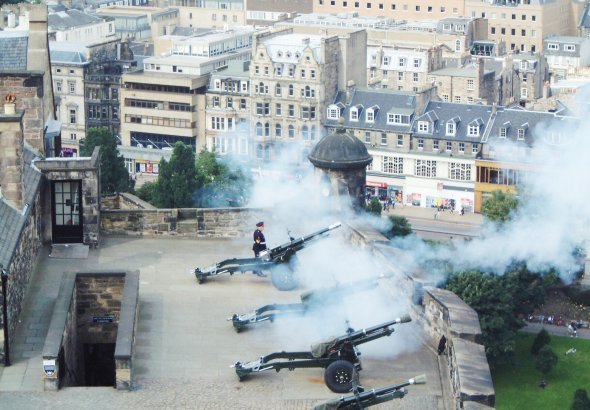 |
The firing of the One O'clock Gun (every day except Sundays, Good Friday and Christmas Day) takes place on Mills Mount battery beside the Cartshed. The practice began in 1861. |
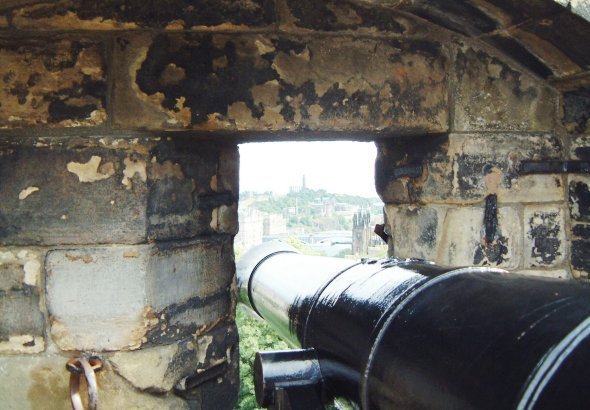 |
This is one of the iron guns on the Forewall Battery. Made during the Napoleonic Wars (c. 1810), it faces south towards Edinburgh's New Town. |
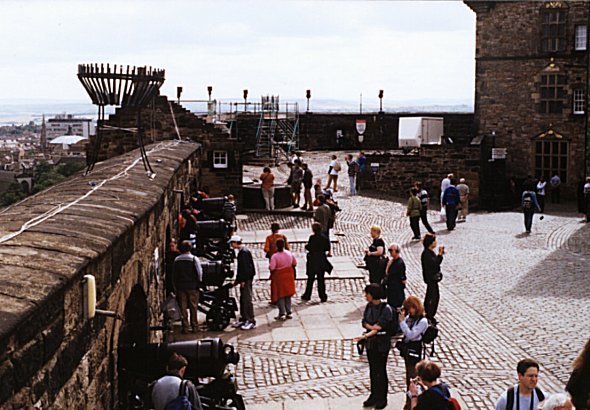 |
Beyond the Forewall Battery is the 16th century Fore Well, which was augmented by the Back Well on the lower level in 1628.
In the background (over the Half-moon Battery with its fire-baskets) a scaffold has been built for the Lone Piper, who appears at the finale of the Edinburgh Tattoo. The eerie ruins of David's Tower are entombed in the Half-moon Battery. |